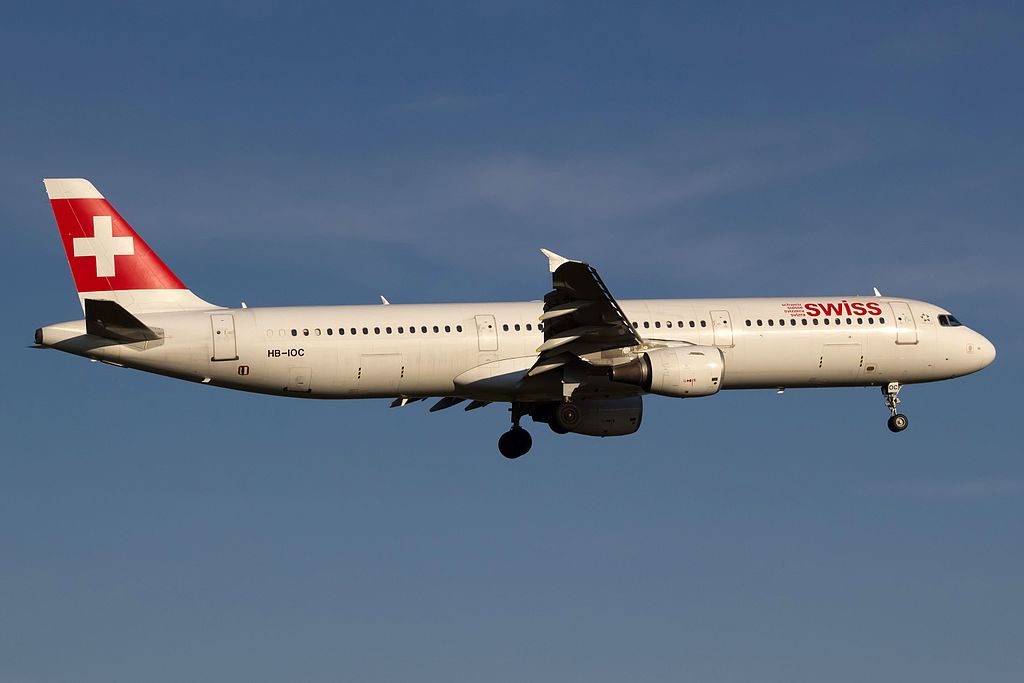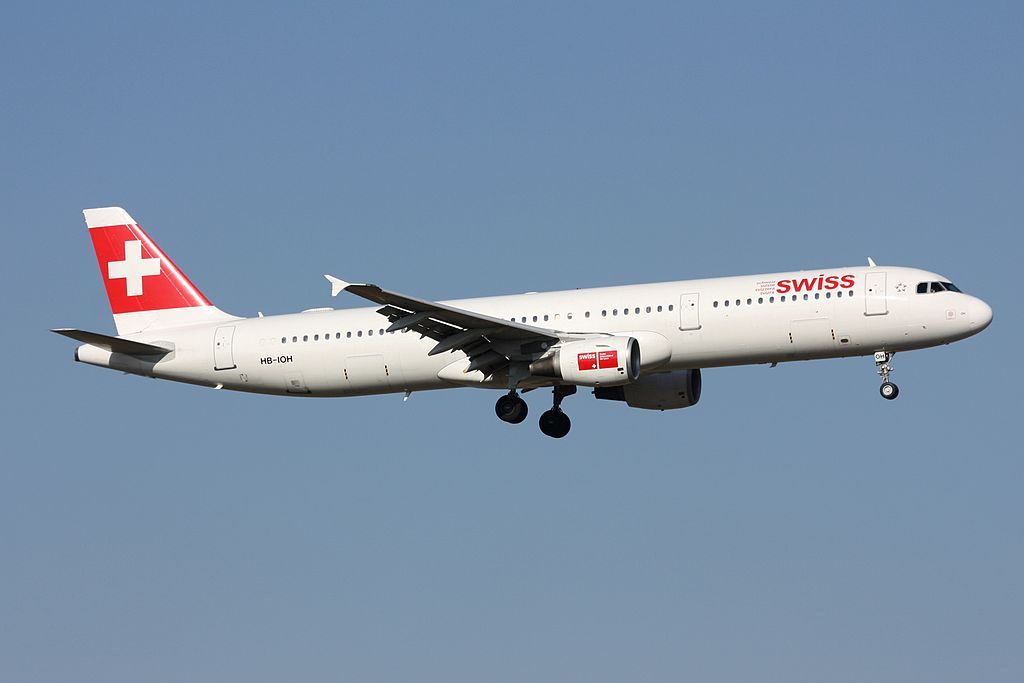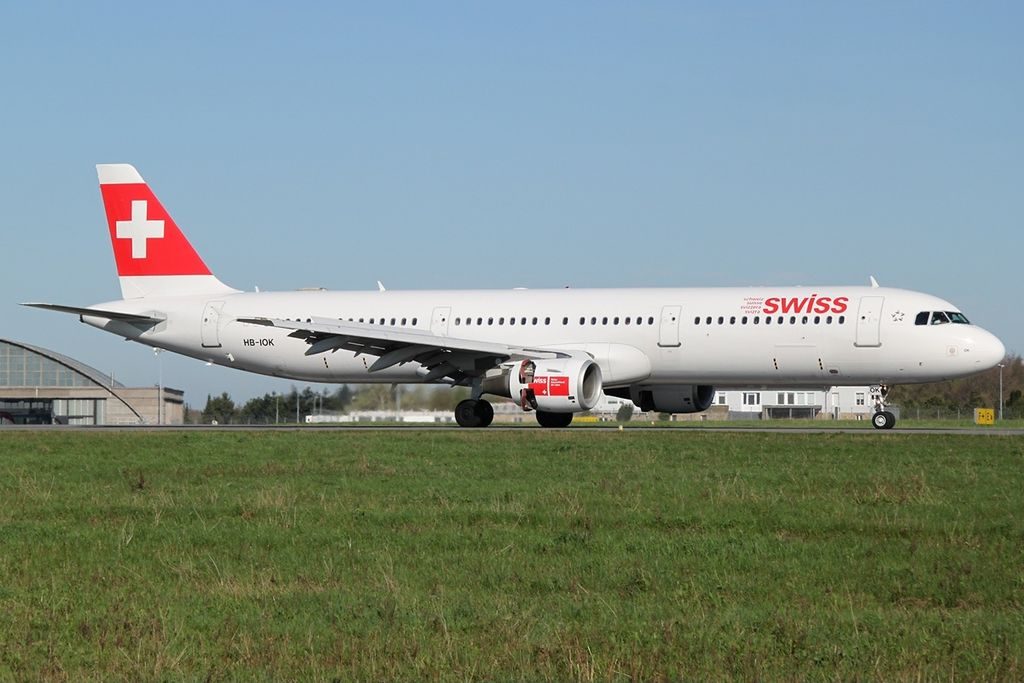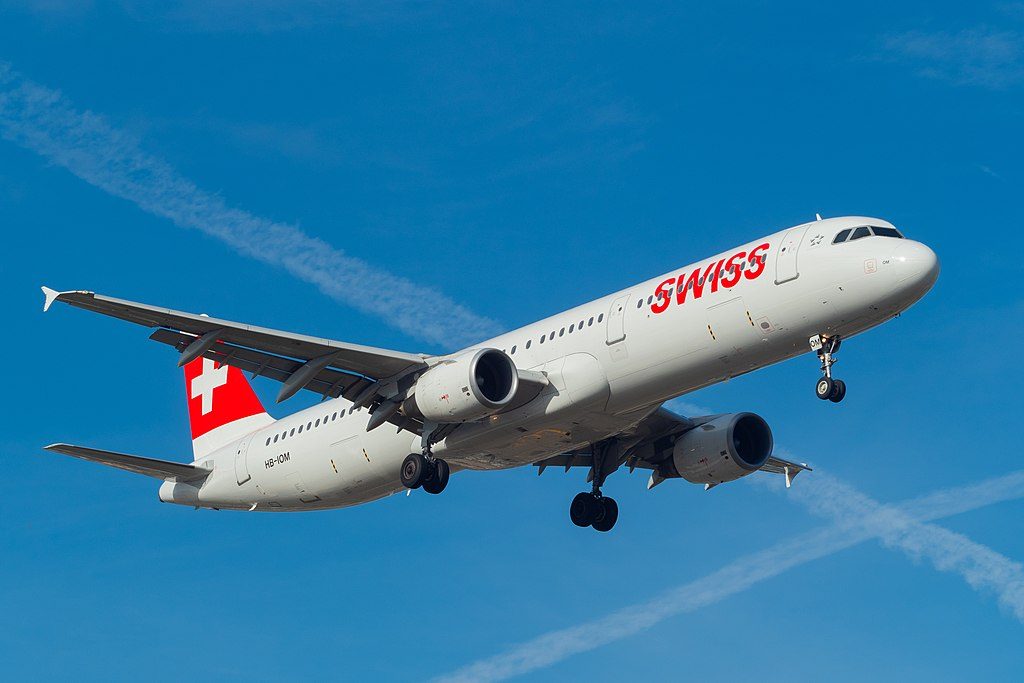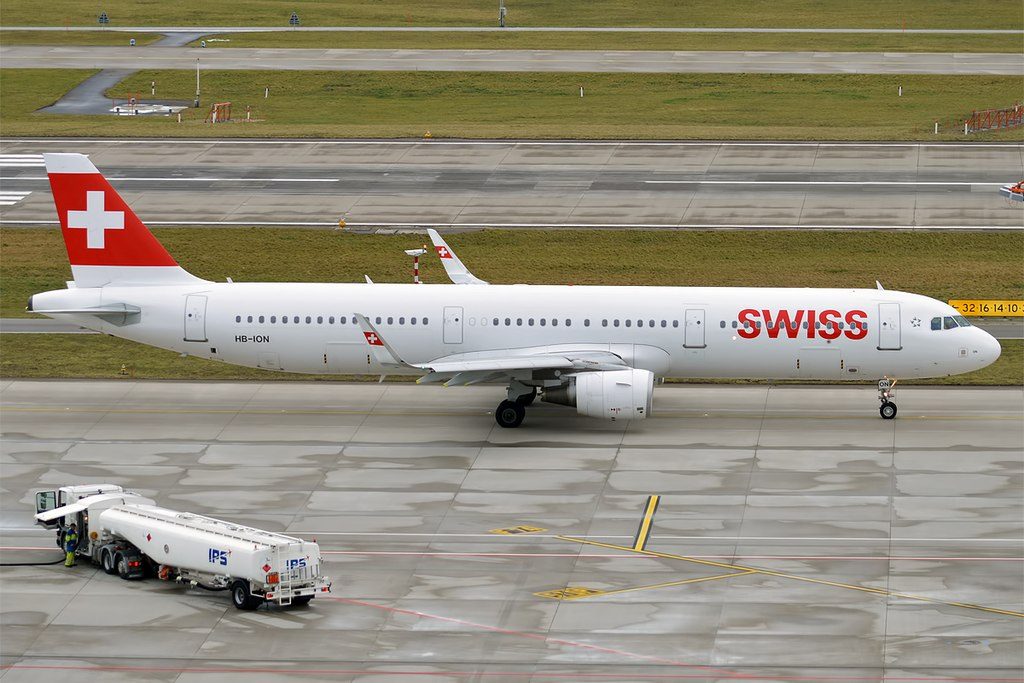SWISS Fleet Airbus A321-100/200 Details and Pictures. On current fleet, SWISS operated 6 Airbus A321-100, and 3 Airbus A321-200.
The Airbus A321-100/200 is used on short and medium distances with high passenger volumes.
The aircraft has 219 seats and a cargo capacity of 4.3 tonnes.
With a length of 44.5 metres, the Airbus A321 is the ‘big brother’ of the A320 family; it is about one-third longer than the Airbus A319.
SWISS uses this aircraft type within Europe and between Switzerland, Africa and the Near East.

Airbus A321-100/200 SWISS Aircraft Fleet Data and Registration Number
| Aircraft Type | Reg |
| Airbus A321-111 | HB-IOC |
| Airbus A321-111 | HB-IOD |
| Airbus A321-111 | HB-IOF |
| Airbus A321-111 | HB-IOH |
| Airbus A321-111 | HB-IOK |
| Airbus A321-111 | HB-IOL |
| Airbus A321-212 | HB-IOM |
| Airbus A321-212(WL) | HB-ION |
| Airbus A321-212(WL) | HB-IOO |
SWISS Fleet Airbus A321-100/200 Cabin Interior Class Configuration and Seats Layout
SWISS operates two versions of Airbus A321-100/200 that are used during the flights to North Africa, Middle East and Switzerland and in Europaen region.
First version Airbus A321 aircraft operates with 176-200 seats and a cargo capacity of 4.3 tonnes.
Swiss uses this Airbus A321 on European routes and between Switzerland, North Africa, and the Middle East.
The Business Class offers passengers more space since the middle seat is not being sold and thus remains free.
Second version Airbus A321 aircraft operates with 12 Business Class seats and 201 Economy Class seats.
Business Class offers passengers more space since the middle seat is not being sold and thus remains free.
SWISS uses the standard Lufthansa Group Recaro NEK seat on its A320 family jets, and this A321 was no exception.
Though undoubtedly slimline, seat pitch is more than adequate. Indeed, while the seat is generally quite comfortable for hops under three hours, the lack of a headrest could make longer journeys uncomfortable.
Unlike some other Lufthansa Group airlines, SWISS has overhead screens, placed above every third row.
The screens are of decent quality and show the safety briefing before the flight and a moving map during it.
SWISS’ A220s have a similar feature, albeit iterated in a slightly different manner.
Seat Map and Seating Chart Airbus A321-100/200 V1 SWISS

First version of the Airbus A321 operated by SWISS may accommodate 176 passengers in two classes.
Business class may transport 68 seats.
These seats are located in two sections.
All the seats of business class have the middle seats blocked thus providing more privacy and room for passengers.
The seats 1A, 1C, 1D and 1F have limited legroom because of the bulkhead position.
Also these seats have no floor storage during take-off and landing.
As the tray tables are in the armrests making them immovable and reducing the width of these seats.
The seats of the 9th row are less reclining because of the exit row located behind.
The seat 9A has misaligned window.
Behind the exit row the second section of business class seats is located.
Passengers of the seats 10BC and 10DE will take advantage of extra legroom thanks to emergency exit.
However, as the tray tables are in the armrests these seats are a little narrower than standard.
Passengers of the seat mat get cold during the flight.
As there are no seats in front passengers of the seats 11A and 11F will feel comfortable due to extra space for their legs.
At the same time the width of these seats is slightly reduced.
Economy class may transport 108 passengers. Most of the seats in economy class have 3-3 configuration.
As behind the seats of the 24th row exit row is located, these seats have limited recline.
Behind the exit row the second section of economy class seats is located.
The seats of the 25th row are considered good seats as they have more space for passengers but the width of these seats is a little narrower.
Passengers of the seats 26A and 26F will feel comfortable due to extra legroom provided by missing seats in front.
The main disadvantage is immovable armrest that restricts the width of these seats.
Proximity of the lavatory will cause discomfort to passengers of the seat 36C.
The seats 36DEF and 37ABC are considered bad seats as they do not recline and are located close to lavatories and galley.
Seat Map and Seating Chart Airbus A321-100/200 V2 SWISS

Second version of Airbus A321 offers 213 seats of two classes: business and economy.
Business class may accommodate 12 passengers.
The seats of the business class are located in 3 rows per 4 in each.
The middle seats are left empty providing additional space for passengers.
Because of the position of the bulkhead the seats of the 1st row have limited space for passengers’ legs.
Also, these seats have no floor storage during take-off and landing and are a little narrower than standard because the tray tables are in the armrests making them immovable.
Economy class offers 201 standard seats.
These seats are divided into three sections.
First section contains 6 rows of seats that have 3-3 configuration.
All these seats are standard, only location of the exit row behind limits recline of the seats of the 9th row.
Second section contains 14 rows of seats.
There are totally 78 seats here.
Thanks to extra legroom the seats 10BC, 10DE, 11A and 12F are considered good seats.
Among disadvantages: lack of floor storage during take-off and landing and reduced seat width.
Congregation of passengers for using lavatories in the area of the seats 23C, 23DEF and 24ABC will cause discomfort to passengers of these seats.
In addition the seats 23DEF and 24ABC are less reclining than standard.
Behind another exit row the third section of economy class seats is located.
This section consists of 15 rows of seats: 14 of them have 3-3 configuration and the last row contains just 3 seats.
Thanks to the exit row located in front the seats of the 25th row offer extra legroom.
However, these seats have no floor storage during take-off and landing and are a little narrower than standard because the tray tables are built-in the armrests making them immovable.
The seats 25BC are considered good seats. Close location of the lavatories is another disadvantage of the seats 25D and 25E.
Missing windows make the seats 25A and 25F bad seats.
The only disadvantage of the seat 38D is proximity of the lavatory.
The seats 38ABC and 39DEF are less reclining than standard and are located close to the lavatory.
In addition the seats 38A and 39F have no windows.
That is why these seats are considered bad seats.
Airbus A321-100/200 SWISS Aircraft Fleet Inflight Amenities and On-Board Services Information
- Video. Overhead TVs are located throughout the cabin.
- Food. SWISS offers complimentary beverage and meal service on all of its flights. Meal service, depending on time of day and length of flight, might range from a small snack to a multi course gourmet meal. Special meals are available and must be ordered in advance of your flight. More Information
SWISS Aircraft Fleet narrow-Body Airbus A321-100/200 Images Gallery
Seat Map and Seating Chart Airbus A321 100 200 V1 SWISS Seat Map and Seating Chart Airbus A321 100 200 V2 SWISS HB IOC Airbus A321 111 St. Moritz of Swiss International Air Lines at Copenhagen Airport Airbus A321 111 Swiss HB IOD Zermatt at Barcelona Airport HB IOF Airbus A321 111 of Swiss International Air Lines at Barcelona Airport Swiss International Air Lines Airbus A321 111 HB IOH Wengen at Zurich International Airport Airbus A321 111 Swiss HB IOK at Luxembourg Findel International Airport SWISS Airbus A321 111 HB IOL at Barcelona Airport SWISS HB IOM Airbus A321 212 Biel Bienne at Geneva International Airport Swiss HB ION Airbus A321 212WL Lugano at Zurich International Airport Swiss International Airlines Airbus A321 212WL HB IOO at Zurich International Airport
Thanks to visiting AirlinesFleet.com and read article : SWISS Fleet Airbus A321-100/200 Details and Pictures.
